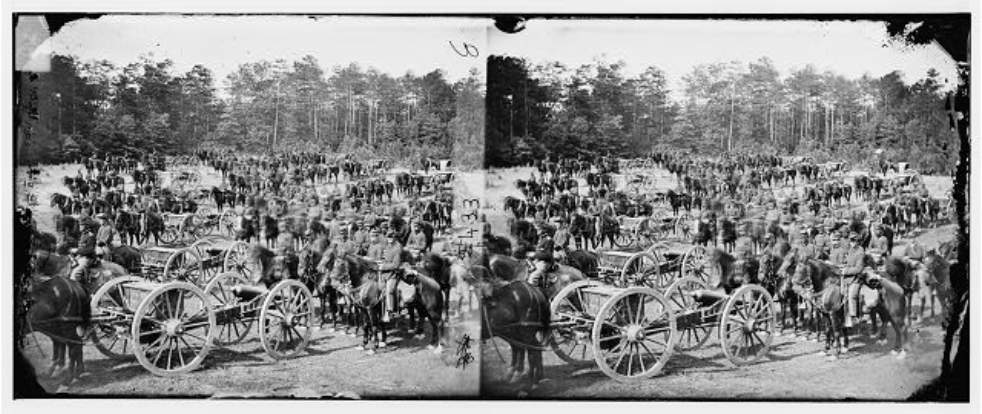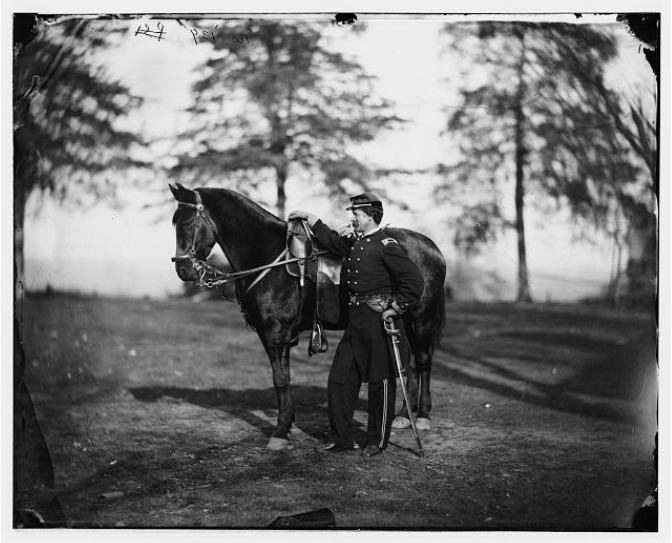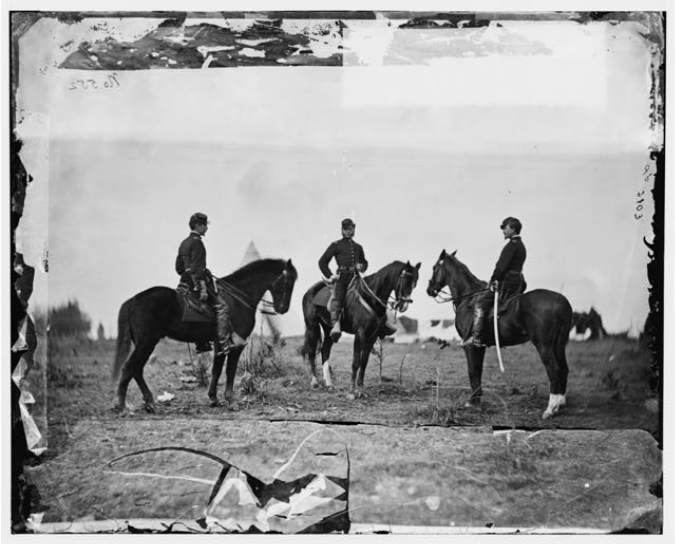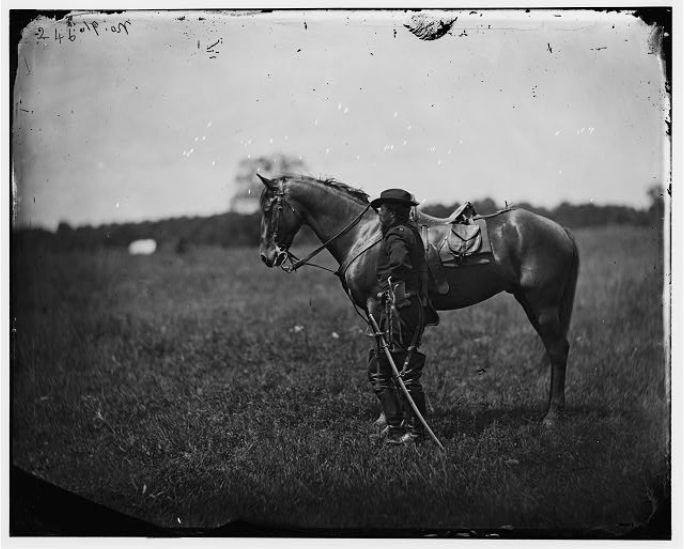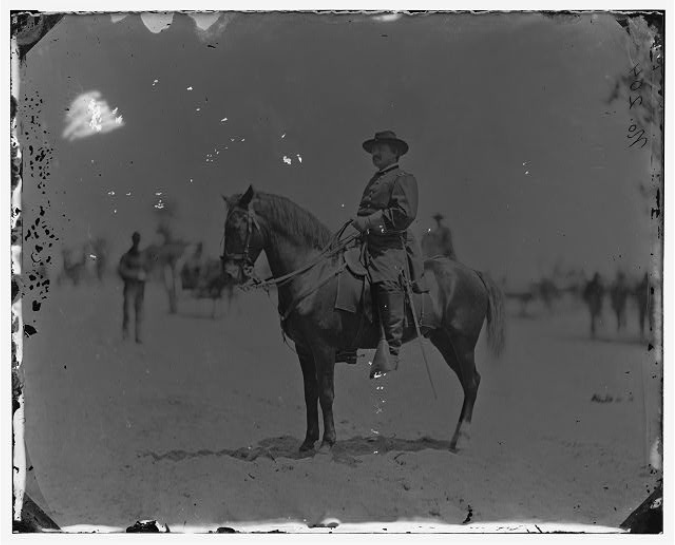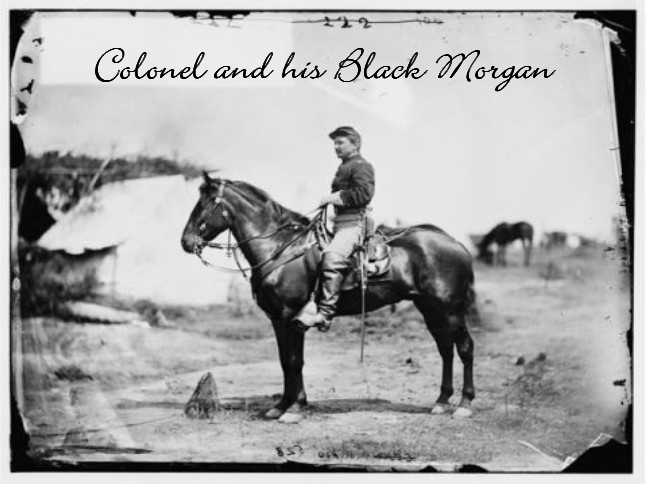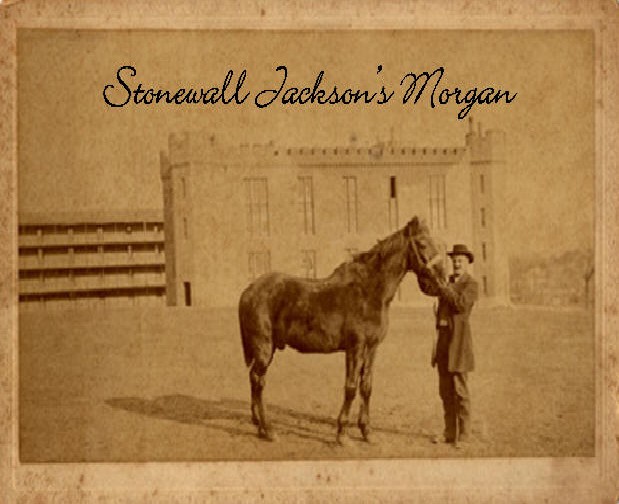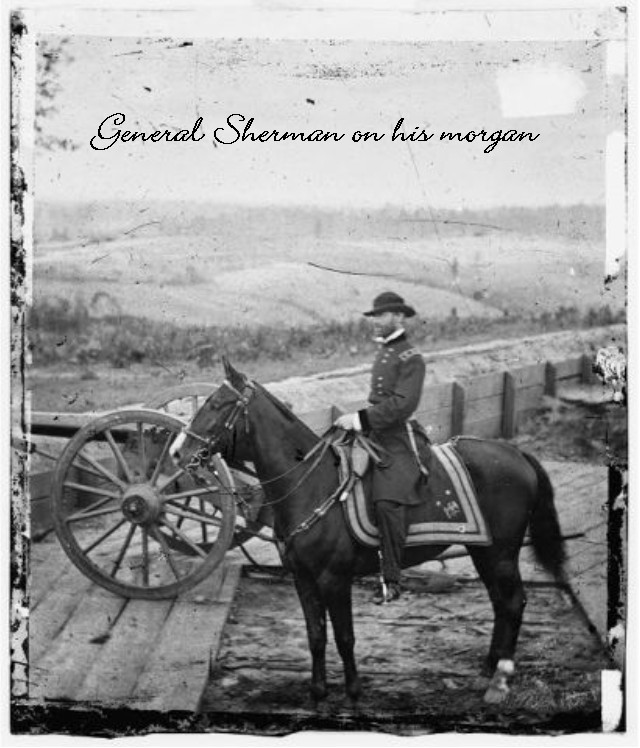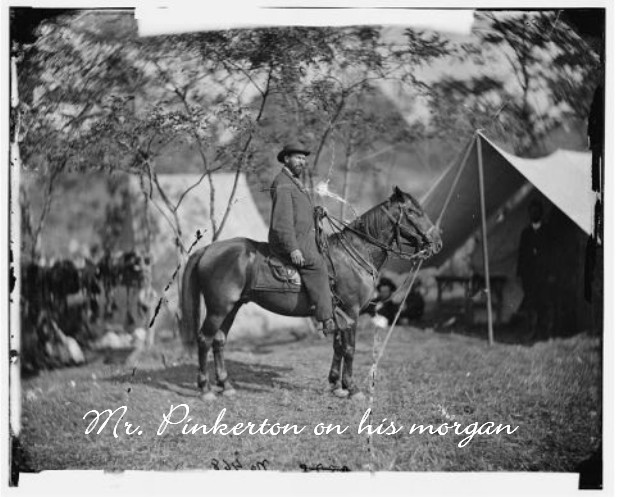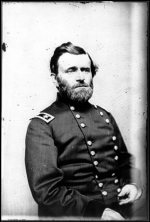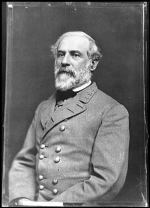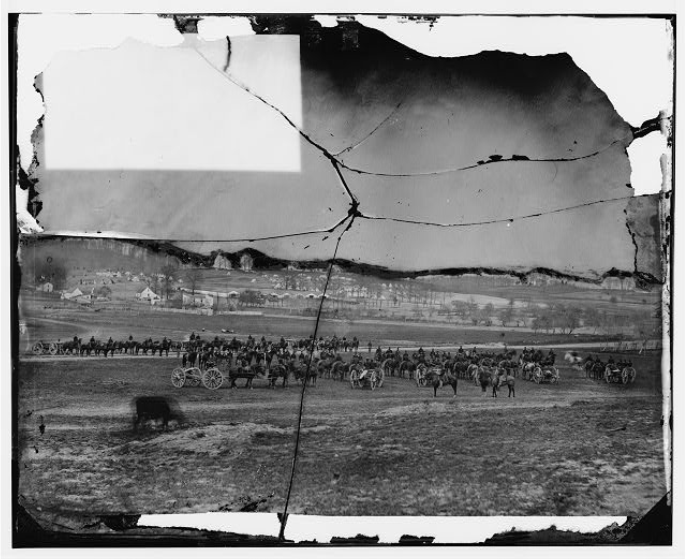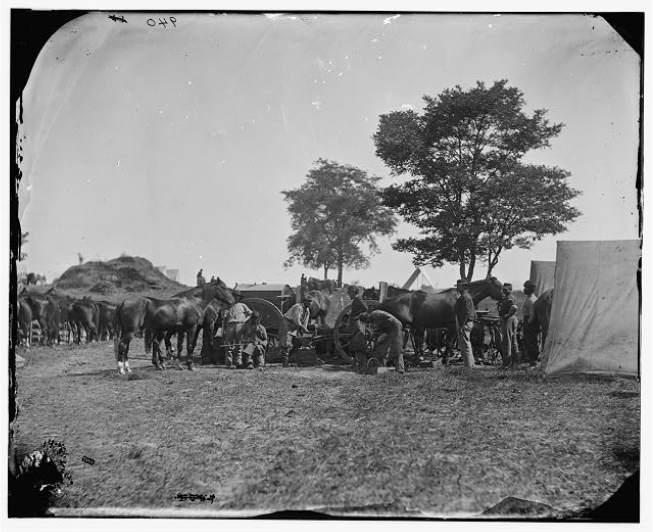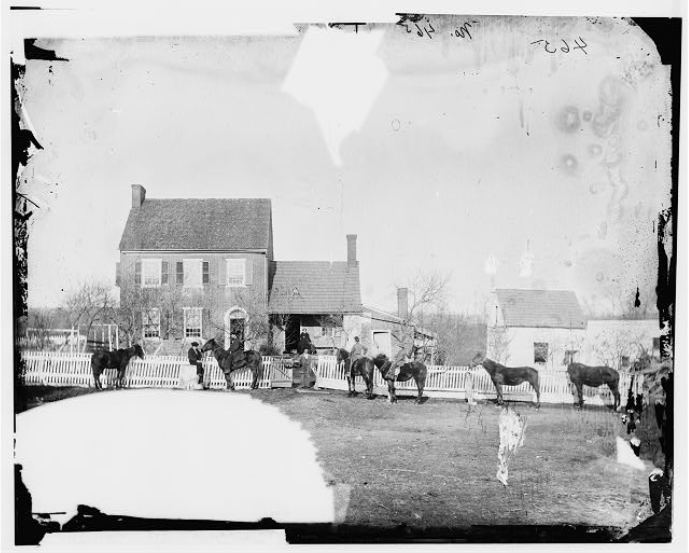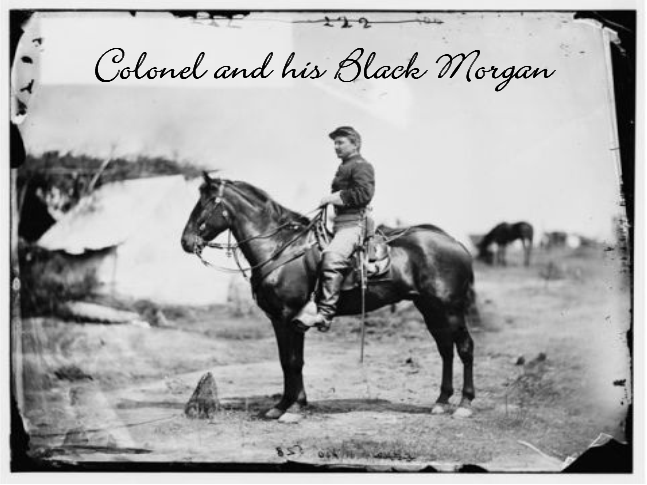MORGANS AS CAVALRY HORSES
At the formation of the Morgan Horse Club, held at the state fair grounds, President Henry S. Wardner of Windsor read a paper on ” The Morgan Horse in War” The speaker said :
At Piermont New Hampshire, lives George Austin, now seventy three years of age, an admirer of the Morgan Horse. His knowledge of the breed is derived from an experience such as few men now living had shared.
He was employed in 1861 by Quarter-master G.S. Blodgett, U.S.A., to assist in the selection of one thousand horses for the First Vermont Cavalry. The horses were purchased in the Northeast section of Vermont, with a few from the New Hampshire towns in Connecticut River Valley. The secretary of war, who new the reputation of Vermont horses, was anxious that the Vermont Cavalry regiment should immediately take the field, and in forty two days from the date of the order for raising the regiment, the regiment was in camp at Burlington, the uniforms provided and the horses on the ground. This was October 16, 1861. Mr. Austin says that the horses were all Morgans and that they were the best cavalry mount in the entire Union Army, and that they outworked and outlasted the horses of any other regiment. As Mr. Austin was a soldier in the regiment from its organization to the close of the war, he does not speak from hearsay.
It was worthwhile to see what the records had to say of the First Vermont Regiment, – the first cavalry regiment to go from the New England states in the war of 1861 – and to see how far they support Mr. Austin’s opinion of character of the mount.
The New York dailies of December 16, 1861, in reporting the arrival of the First Vermont Cavalry in that city on the day before, had this to say:
The ” Evening Post”: “The horses have been selected by competent judges from the best stock in Vermont. The regiment was the object of general interest and admiration in this city yesterday.”
The “World”: ” The regiment numbers 1,030 men and over 1,100 horses. The latter are nearly all of the Morgan breed, and make a much better appearance than many steeds are reported to make in Washington.”
The :Tribune”: “The personnel of this regiment is unsurpassed by any in the service. The uniforms and equipments of the men are of a superior order and no expense seems to have been spared by the state in fitting the regiment out for the branch of the service in which is to be engaged. Most of the horses are of the celebrated Morgan stock- they have been well cared for and a pretty well drilled.”
The “Herald”: ” The regiment is a sturdy one, and the material, both as to men, horses and equipments, of just the character furnished by Vermont in this contest, when she has manfully undertaken to furnish the national government with supplies and sinews of war. In this respect the Green Mountain State maybe fully said to have done nobly, and her page in the future history of this unholy rebellion will be replete with patriotism and the recounting of deeds of valor at the hands of her hardy and chivalrous sons.” Speaking particularly of the horses, it said: “these animals are all of the Morgan Breed, and embrace hundreds of splendid specimens of the equine race.”
The Newark, New Jersey, Advertiser of December 17th, 1861, in describing the march of the First Vermont Cavalry up through Newark on the way to Washington, said: “the Green Mountain Boys arrived about four o clock and marched up Market Street amid the liveliest token of enthusiasm…. The horses are small, compact and sinewy and evidently capable of great endurance. It was the general remark that so splendid a body of animals had never been seen together in this city.”
The regiment reached Washington on December 20, and the Washington correspondent of the Boston Journal reported to his paper that it was ” The best Cavalry mount that has been seen at the capital.”
General Stoneman , in complimenting colonel Platt on the raising of the regiment, wrote: “allow me to express the wish that your success through life may equal your success in raising, mounting and bringing into service one of the very best regiments of Calvary that has been brought to my notice.”
The regiment lived up to its fine appearance. In 75 battles and skirmishes among them some of the great and bloody battles of war, the regiment engaged and often with conspicuous distinction. at Gettysburg, Cedar Creek, Cold Harbor, in the Wilderness Campaign, in the Shenandoah Valley and finally at Appomattox Court House. It was under such generals as Merritt, Farnsworth, Custer, Kilpatrick and Sheridan. Both Farnsworth and Custer lead it personally. The rapidity of its movements and its endurance in covering distances brought it promptly to the places where it was needed and resulted in its often being placed in the advanced for the attack. The records of the war department show the facts.
In a desperate charge ordered by Kilpatrick at Gettysburg, General Farnsworth lead the First Vermont Calvary in person, riding by the side of Major Wells at the head of the second battalion. They were supported by Colonel Preston with the first and third battalions. The regiment encountered not less than five regiments of Confederate Infantry, -the First Texas, the Seventh and Ninth Georgia, the Fourth and Fifteenth Alabama- and two batteries. General Farnsworth was killed in this charge, and the writer says: “That any considerable number of the men who charged with Farnsworth survived so desperate a duty is explainable only by the fact that they were in constant and rapid motion.”
By public order on September 17 th, 1863, General Kilpatrick express his thanks to Colonel Sawyer of the First Vermont Calvary for its prompt and gallant manner in repulsing the enemy the day before at Capitol Raccoon Ford. On October 18 th, 1863, at Gainesville, General Custer wrote : “The First Vermont Calvary under Colonel Sawyer , deserves great credit for the rapidity with which for they forced the enemy to retire.”
General Wilson in reporting the battle at Craig’s Meeting House, wrote: “By 8 a.m. the Second Brigade, with the First Vermont Calvary, Colonel Preston command , in advance, had arrived at Craig’s Meeting House. Just beyond, they encountered the enemies cavalry, Rossier’s Brigade, and after a very sharp fight and several handsome charges, drove it rapidly back a distance two miles.” Colonel Chapman, brigade commander , reporting the engagement at Hanover Court House, wrote:” The service of the First Vermont Cavalry this day was, arduous and severe and its loss was heavy. The command is worthy of the highest praise.” Three days later at Cold Harver , the regiment lost its brilliant leader, Colonel Preston, of whom General Custer then said:” There lies the best fighting colonel in the cavalry corps.”
Custer’s report of Cedar Creek Bears, eloquent testimony to the worth of both man and horse in the first Vermont Cavalry. This is what he wrote: “The rapid pace at which my command had moved had, necessarily, extended by column, and upon reaching the vicinity of the creek, I had but two regiments available- The First Vermont and the Fifth New York.” He describes putting these regiments into action, and then continues: “Owing to the darkness and the necessary delay at the Fords, the regiments I was expecting failed to reach me to assist or even overtake the two regiments which were then far on their way to Strasburg. The result, whoever, proved that these two noble regiments were more than competent for the duty assigned them. Never since the beginning of the war, has there been such favorable opportunity for a comparatively small body of troops to acquire distinction as was here presented.”
His report continued with high praise for these two regiments, but in every case of mention of their names it was the First Vermont Cavalry, first, and the Fifth New York, second. In this battle, the First Vermont Cavalry captured 161 prisoners, including one General officer, one Colonel, and one Lieutenant Colonel. It also capture three battle flags, 23 pieces of artillery, 14 caissons, 17 army wagons, and many horses, harnesses, etc., writing of the battle, the war correspondent of the New York Tribune said: ” As there were but 48 pieces of artillery captured by the entire army, this splendid achievement of the Green Mountain boys can be fully appreciated. General Sheridan states the no regiment has capture so much since the war commenced. The First Vermont has long been a terror to the rebels.”
But General Sheridan later still higher praise of the Vermonters. He said: ” I have never commanded troops in whom I had as much confidence as those of this gallant state.” While Sheridan was speaking of Vermont troops generally, he, who’s great reputation was due to his work as a cavalry officer, must surly have had in mind the First Vermont.
In considering the record of the accomplishments of the First Vermont cavalry, undoubtedly, one of the great working and fighting regiments of the Civil War, no one can deny that a large measure of credit belong to the horses- the Morgan horses of the Green Mountain state. Out promptly at the first call, ahead of any other New England regiment of cavalry; hard work from start to finish by the greatest cavalry leaders of the war; in at the death of Appomattox Court House- no breed, other than the Morgans , could have stood the strain so well. Mr. Austin says that 200 of the horses of the original draft survived to the end of the war and that some of these were brought back to their native state.
The last report is the most eloquent of all. It came from the Lieutenant Colonel Hall, from Appomattox on April 9th, 1865, and said: ” Were charging the enemy when the order came to stop fighting. That was the final word from the men and the horses. How much it sounds like the Morgans ! They had done all the work that was set before them, and it was heavy, and they were up and doing and ready to do still more if they had been asked to keep on.”
by Kathlyn Furr, NMMH Archivist




